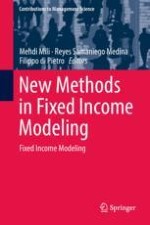
2018 | OriginalPaper | Buchkapitel
Term Structure, Market Expectations of the Short Rate, and Expected Inflation
verfasst von : Jian Luo, Xiaoxia Ye
Erschienen in: New Methods in Fixed Income Modeling
Aktivieren Sie unsere intelligente Suche, um passende Fachinhalte oder Patente zu finden.
Wählen Sie Textabschnitte aus um mit Künstlicher Intelligenz passenden Patente zu finden. powered by
Markieren Sie Textabschnitte, um KI-gestützt weitere passende Inhalte zu finden. powered by